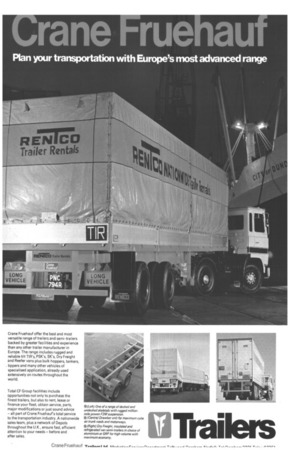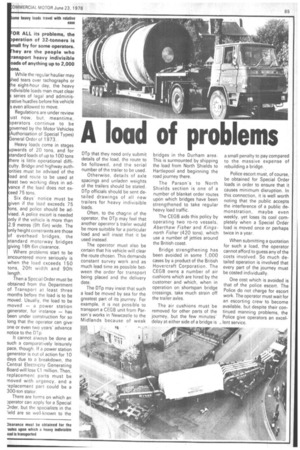laTrailers
Page 86

Page 87

If you've noticed an error in this article please click here to report it so we can fix it.
OR ALL its problems, the peration of 32-tonners is mall fry for some operators. hey are the people who ransport heavy indivisible oads of anything up to 2,000 ons.
While the regular haulier may hed tears over tachographs or he eight-hour day, the heavy ndivisible loads man must clear series of legal and adminisrative hurdles before his vehicle s even allowed to move.
Regulations are under review ust now, but, meantime, perators continue to be overned by the Motor Vehicles Authorisation of Special Types) eneral Order of 1973.
Heavy loads come in stages upwards of 20 tons, and for tandard loads of up to 100 tons here is little operational difficulty. Bridge and highway authorities must be advised of the load and route to be used at least two working days in adance if the load does not exceed 75 tons.
Six days' notice must be given if the load exceeds 75 ons, and police should be advised, A police escort is needed only if the vehicle is more than 2.9 metres (9ft 6in) wide. The only height constraints are those of overhead bridges, the standard motorway bridges giving 16ft 6in clearance.
Where problems start to be encountered more seriously is when the load exceeds 150 tons, 20ft width and 90ft length.
Then a Special Order must be obtained from the Department of Transport at least three months before the load is to be moved. Usually, the load to be moved — a power station generator, for instance — has been under construction for so long that the operator can giveone or even two years' advance notice to the DTp It cannot always be done at such a comparatively leisurely pace, though. If a power station generator is out of action for 10 days due to a breakdown, the Central Electricity Generating Board will lose £1 million. Then, replacement parts must be moved with urgency, and a replacement part could be a 300-ton stator.
There are forms on which an operator can apply for a Special Drder, but the specialists in the 'ield are so well-known to the




































































































































































